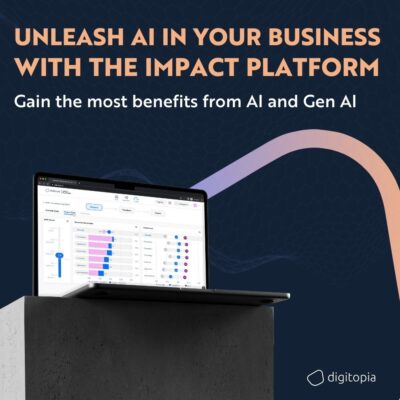
A hush settled over the conference room the moment Mark Thompson walked in. Despite his mild demeanor, Mark’s reputation preceded him: he had orchestrated several high-profile digital transformations, earning praise for sophisticated architectural designs and system integrations. On paper, he seemed the ideal figure to head an ambitious CRM overhaul. Yet behind that stellar CV lay a leadership style that lacked empathy—setting the stage for a corporate project destined to unravel.
Modern technology executives, including CIOs, CTOs, and engineering directors, juggle myriad responsibilities. They must champion cloud migrations, neutralize cybersecurity threats, drive AI initiatives, and still attend to the daily demands of operations. Beyond technical excellence, however, they face a profound leadership challenge: how to unify large, cross-functional teams while navigating internal politics and justifying significant budgets to executive boards. Here, emotional intelligence (EQ)—the capacity to perceive and manage one’s own emotions and sensitively engage others—often determines whether endeavors remain at the level of basic deployments or spark true organizational evolution.
The Tension of Modern Tech Leadership
In a world where technology drives competitive advantage, tech leaders operate under a relentless spotlight. Companies rush to adopt AI, analytics, and cloud services to stay relevant, expecting near-instant ROI. A single software glitch can compromise revenue, tarnish reputations, or invite regulatory fines. Meanwhile, boards scrutinize operational costs and time-to-market metrics, constantly questioning whether the chosen approach aligns with overarching business goals.
This environment intensifies the pressure on those at the helm of IT and product development. The stakes of each project—be it a data center expansion or an e-commerce platform update—can run into the millions of dollars, leaving minimal room for error. While strong coding abilities and technical know-how remain crucial, what frequently tips projects toward success is the leader’s ability to connect with people, orchestrate collaboration, and foster a safe space for debate and innovation. Without emotional intelligence, even the best technical blueprint risks failure.
Mark Thompson: When Technical Genius Falls Short
Mark Thompson’s early career was studded with accolades. As a young software engineer, he became known for resolving code crises that stumped entire development teams. His knack for debugging, optimizing architectures, and implementing cutting-edge solutions earned him a sterling reputation. Emboldened by these triumphs, a major firm invited him to modernize its aging CRM—a system critical for sales, marketing, and customer support alignment. Eager to leverage his talents, they allocated a generous budget and gave him almost free rein.
The Unraveling
From the outset, though, warning signs emerged. Mark leaned heavily on technical jargon—microservices, container orchestration, real-time event streaming—when outlining the project roadmap. Sales managers, unversed in software intricacies, felt left behind. Marketing analysts who needed targeted insights on campaign performance struggled to get clear answers about what would change in the CRM’s user experience. Even business analysts who might have served as bridges between tech and corporate functions saw their input sidelined.
Behind closed doors, Mark was dismissive of concerns. Developers who questioned deadlines or flagged user experience pitfalls were told to “just figure it out.” Product managers received vague reassurances instead of genuine engagement with real-world constraints. In demonstrations, employees found the proposed interface cluttered and unintuitive, while essential analytics features were buried. Mark chalked up resistance to “poor data hygiene” or “inadequate training,” rarely acknowledging that his approach lacked feedback loops.
After about six months, the new CRM was technically advanced but suffered from low usability and minimal user adoption. Performance bottlenecks, seemingly trivial from Mark’s perspective, impaired daily operations. Instead of responding to critiques by making iterative changes, Mark doubled down on his vision, asserting that the organization had to “catch up” with his architectural brilliance.
Ultimately, executives faced ballooning costs and morale dips across sales and marketing teams who felt ignored. Rather than seeing improvement, the CRM rollout became a liability, draining resources and stalling other important projects. When the board intervened, they halted Mark’s initiative and replaced him, concluding that even great technical minds can fail without a human-centric leadership style.
Sabrina Delacroix: Leading with Openness and Empathy
Stepping in after Mark’s abrupt departure, Sabrina Delacroix epitomized a different brand of leadership. She had a balanced background: a foundation in computer science complemented by substantial experience interfacing with business units. Colleagues often described her as “steady, approachable, and keen on collaboration.”
Practical Shifts, Revived Project
Sabrina’s first move wasn’t to champion a new technical design. Rather, she conducted listening tours with the very people Mark had brushed aside: sales reps, marketing analysts, frontline customer support staff, and the IT developers who had been demoralized by Mark’s closed-off style. She collected pain points on workflows, reporting needs, and user expectations.
Having compiled real-world feedback, Sabrina and a cross-functional task force identified priorities for the CRM. Instead of emphasizing cutting-edge microservices, they streamlined interface designs to reduce redundant steps for sales reps. They also integrated simpler, more intuitive dashboards for marketing. Sabrina saw that limited training materials had contributed to confusion, so she commissioned short tutorial videos and hands-on workshops to build user confidence.
By focusing on what users genuinely needed, Sabrina reignited interest in the CRM. Sales teams found they were no longer wrestling with the tool for basic tasks, and marketing leaders could finally extract meaningful analytics without having to dig through layers of obscure reports. As the changes took effect, cross-departmental collaboration improved, and the board—once skeptical after Mark’s debacle—found renewed faith in IT leadership.
Sabrina’s approach was proof that major turnarounds are possible when leaders champion empathy, transparency, and genuine partnership with stakeholders.
Why Emotional Intelligence Drives Tech Success
The tales of Mark and Sabrina underscore the chasm between technical acumen alone and the holistic leadership needed to guide large-scale projects. Emotional intelligence—encompassing self-awareness, empathy, conflict resolution, and effective communication—fosters genuine buy-in, which is often the linchpin of success in complex tech environments.
Self-Awareness & Self-Management
Effective leaders recognize their emotional triggers. Tight deadlines, budget cuts, or unexpected setbacks can provoke frustration. In Mark’s case, his short temper and impatience with “less technical” teams bred distrust. By contrast, Sabrina demonstrated self-control. When confronted with user frustrations, she didn’t lash out or dismiss them; she asked follow-up questions and worked with teams to find solutions.
Self-management also influences how a leader responds to setbacks. Mark grew defensive and doubled down, often alienating stakeholders further. Sabrina, however, absorbed critiques and recalibrated, ensuring constructive problem-solving took priority over saving face.
Social Awareness & Empathy
Technical brilliance doesn’t eclipse the necessity of understanding how non-technical colleagues view a project. Marketing teams need user-friendly data analytics; sales reps prioritize quick data entry and reliable follow-up prompts; customer support teams require fast record access. Sabrina invested time in comprehending these perspectives, whereas Mark’s tunnel vision on “superior architecture” precluded him from seeing everyday usability issues.
Empathy means acknowledging that each department has unique stressors—sales quotas, campaign deadlines, or compliance mandates—and shaping solutions that respect these realities.
Relationship Management & Conflict Resolution
Large-scale tech initiatives inevitably involve conflicts—over scope, resources, or timelines. Emotionally intelligent leaders transform these clashes into constructive debates. By inviting dissenting voices, they unearth hidden pitfalls and refine solutions earlier.
Mark, however, perceived challenges as personal affronts, labeling them as evidence of others’ incompetence or “failure to adapt.” Sabrina’s modus operandi was different: conflict became a gateway to forging consensus, as she tapped into cross-functional expertise to co-create a more efficient CRM.
Cultivating EI in Tech Settings
Emotional intelligence isn’t an inborn talent that some people have and others don’t. It’s a skill set leaders can develop. For tech executives juggling deadlines and complex architectures, integrating EI practices can yield dramatic improvements.
Reflect & Seek Feedback
A simple step is taking time each day—perhaps a few minutes after major meetings—to note emotional high points or moments of tension. Did a question from finance set off irritation? Did marketing’s request for a feature extension prompt a defensive reaction? Recognizing these triggers is the first step toward managing them more effectively.
Anonymous feedback from peers and direct reports also helps. If junior developers or marketing coordinators can safely report issues, leaders gain a clearer sense of organizational morale and blind spots.
Build Cross-Functional Understanding
Many friction points arise because one department doesn’t grasp another’s challenges. Encouraging “day-in-the-life” experiences—like letting a developer shadow a sales rep—fosters empathy. The developer sees firsthand the frantic pace of client calls and the dire need for a CRM that doesn’t impede progress. Similarly, a marketer who observes the complexities of system integration might temper unrealistic demands.
Practice Healthy Conflict Resolution
In high-stakes projects, conflicts pop up around budget constraints, resource allocation, or feature priorities. Leaders can model healthy resolution by reframing disagreements from “someone is wrong” to “we have different viewpoints—let’s find a workable path.” Techniques like active listening, repeating back the speaker’s concerns (“I hear that you’re worried about timeline slippage…”), and focusing on the problem rather than personalities can de-escalate tensions swiftly.
Leverage Coaching & Training
Few organizations question the value of technical training, but many overlook the need for systematic instruction in soft skills. Workshops in empathetic communication, negotiation, or conflict mediation can sharpen a leader’s ability to unite teams. One-on-one executive coaching also provides a private forum to tackle personal growth areas—be it controlling reactive behaviors or learning to deliver firm yet constructive criticism.
Key Lessons from Mark vs. Sabrina
- Tech Prowess Alone Isn’t Enough: Masterful code or architectural brilliance doesn’t ensure success if stakeholders feel ignored or undervalued.
- Empathy Spurs Adoption: Tools that reflect real user needs enjoy stronger buy-in and higher success rates.
- Translate Tech Jargon: Bridging language gaps between IT and business fosters shared understanding.
- Reject Blame Culture: Organizations thrive when it’s safe to raise issues, test ideas, and learn from mistakes.
- Embrace Adaptability: Technology trends shift quickly; leaders must remain flexible and open to pivoting.
- Leaders Shape Culture: Executive behaviors ripple throughout the company, shaping how teams interact and solve problems.
Embedding EQ Across the Organization
Emotional intelligence shouldn’t be confined to a single standout leader. Enterprises that bake EQ into their DNA experience more cohesive teams and resilient project outcomes.
1. Cross-Department Interactions
Encouraging employees from different units—finance, HR, development, sales—to collaborate via hackathons, shared Slack channels, or brainstorming sessions reduces silo mentalities. It also helps identify potential pain points earlier.
2. Structured EQ Development
Include emotional intelligence competencies in leadership training, performance reviews, and mentorship programs. High performers aren’t just those who deliver code fastest but those who help others excel and maintain a positive environment.
3. Transparent Leadership
Leaders who openly address challenges—admitting uncertainty or owning up to mistakes—cultivate trust. This transparency counters fear-based cultures. Had Mark openly asked for feedback or admitted confusion about user requirements, the CRM project might have taken a different trajectory.
4. Reward Soft Skills
Promoting people who show empathy, strong communication, and collaborative problem-solving underlines the organization’s commitment to EQ. If only technical feats earn recognition, employees may downplay empathy and cooperation as “nice but not essential.”
5. Prioritize Change Management
Every major rollout—be it a CRM overhaul or cloud migration—should include robust change management. Assess readiness, address anxiety through training, and gather continuous feedback as the project unfolds. This fosters a sense of joint ownership over new technologies.
The Long-Term Payoff
An EQ-centered approach to tech leadership unlocks benefits extending far beyond a single project.
Sustainable Innovation
Teams that trust their leaders feel freer to propose bold, even risky ideas. When missteps arise, they pivot quickly, turning failures into lessons. This cycle of innovation keeps organizations relevant in a market defined by rapid evolution.
Talent Magnet
The best engineers, data scientists, and UX designers often have multiple job opportunities. They gravitate to workplaces that value respectful debate, diverse viewpoints, and personal well-being. A culture riddled with blame repels top-tier talent, no matter how exciting the technical stack might be.
Stronger Alliances
When IT is perceived as an ally—rather than a roadblock—departmental silos crumble. Sales listens more openly to data-driven suggestions, finance sees tech investments as strategic rather than sunk costs, and marketing shapes campaigns with real-time analytics insights. These alliances streamline decision-making and unify strategic efforts.
Crisis Resilience
In times of turmoil—economic downturns, data breaches, or supply chain disruptions—trust built on empathy can be a saving grace. Teams collaborate more seamlessly when they trust each other’s intentions. Leaders with EQ keep people focused on problem-solving rather than internal finger-pointing.
Rethinking Tech Leadership
Enterprises increasingly depend on complex systems, but technology still hinges on the people who design, deploy, and use it daily. Mark’s downfall serves as a cautionary tale: even advanced solutions can collapse under the weight of arrogance or disregard for user concerns. Meanwhile, Sabrina’s success shows how empathy, listening, and shared decision-making can rehabilitate troubled initiatives.
For organizations facing AI expansions, data governance reforms, or large-scale cloud migrations, emotional intelligence functions as an anchoring force amid potential chaos. While empathy and communication may take time, they ultimately reduce costly rework and ramp up morale.
Practical Actions to Advance EQ
Empathy Mapping: Bring together employees from various departments to chart user journeys and highlight pinch points. This fosters shared understanding of real workflows.
Conflict-Resolution Sessions: Engage a neutral facilitator to guide heated discussions. People learn effective debate and negotiation skills, turning friction into forward progress.
Mentorship & Buddy Programs: Pair less experienced staff with seasoned colleagues from outside their immediate team. Cross-department mentorship widens perspectives and cultivates mutual respect.
Celebrate Small Wins: Regularly recognize instances of collaborative success—like a sales rep and developer who teamed up to refine a new feature—reinforcing the value of synergy.
Leadership Test-Runs: Temporarily assign up-and-coming employees to lead sub-projects or initiatives. This real-world practice hones their EQ muscles and prepares them for larger roles.
Conclusion
Genuine tech leadership doesn’t stop at building sophisticated platforms or writing flawless code. It thrives on emotional intelligence—the ability to unify and inspire diverse teams, respond graciously to criticism, and adapt solutions to real-world contexts. Mark Thompson’s story highlights what happens when brilliance goes unchecked by empathy, while Sabrina Delacroix’s journey affirms the power of listening, openness, and collaborative engagement.
Companies that bake EQ into their cultural fabric see fewer project implosions, stronger cross-departmental bonds, and higher employee satisfaction. In a landscape where technology underpins almost every competitive edge, remembering the human element is crucial. By balancing technical vision with emotional acumen, modern tech leaders can guide their organizations to adopt solutions that truly resonate—achieving outcomes measured not just in cost savings or performance metrics, but in the lasting confidence and unity of their workforce.













